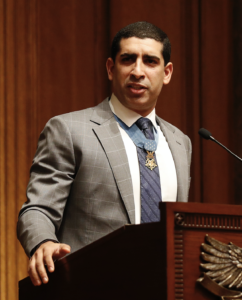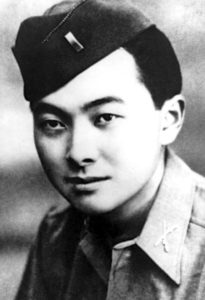March 14 marks the 50th anniversary of the release of General George E. “Bud” Day as a prisoner during the Vietnam War. Nearly three years, later, General Day would be presented with the Medal of Honor for his bravery and resistance.
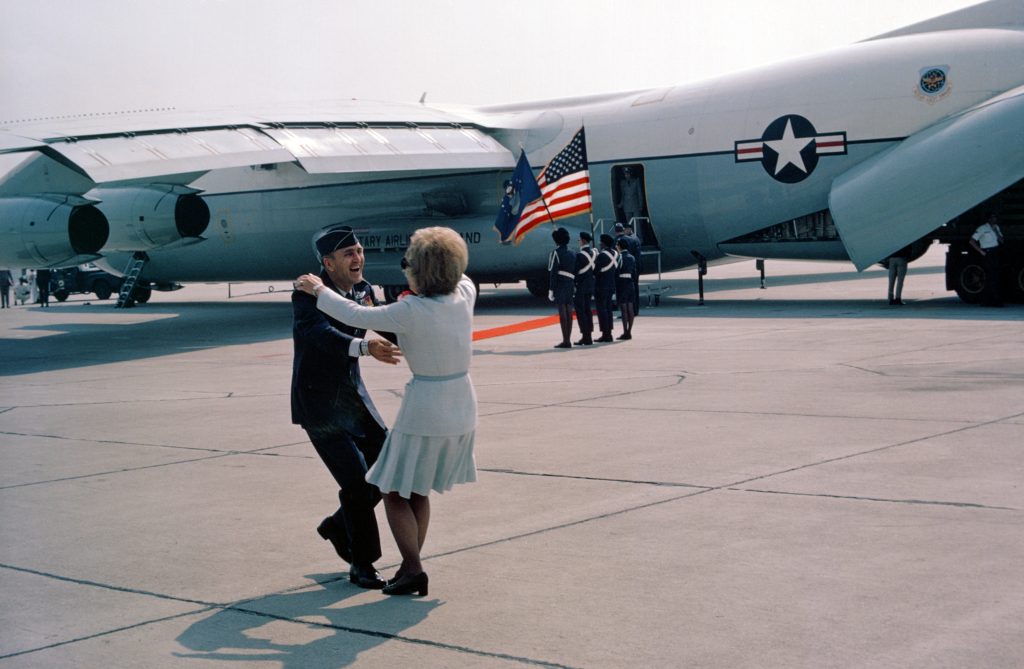
Born in Sioux City, Iowa on February 24, 1925, Day enlisted in the U.S. Marine Corps in 1942 and served on Johnston Island in the Pacific. After World War II, he attended Morningside College and later the University of South Dakota School of Law. In 1950, he was commissioned a second lieutenant in the Iowa Air National Guard and called to active duty one year later. He earned his pilot wings in 1952 and served in the Korean War flying the F-84 Thunderjet. After that conflict, he continued in the Air Force throughout the 1950s and early 1960s. In 1967, he volunteered for service in Vietnam and served as the first commander of a forward air controller unit with the callsign “Misty.”
On August 26, 1967, then-Major Day was piloting an F-100 Super Sabre when he was shot down over North Vietnam during an attack on a surface-to-air missile site. Forced to eject, his right arm was broken in three places and his knee was badly sprained. Captured soon after landing, he was interrogated and tortured for information. On September 1, when he noticed the guards had relaxed their watch, he escaped towards South Vietnam. Evading patrols and subsisting on wild berries and uncooked frogs, he reached the Ben Hai River and the demilitarized zone. Using a bamboo log to swim across the river, he tried to signal U.S. aircraft but was wounded in his hand and thigh by Viet Cong forces and recaptured on September 13.
He was later taken to Hanoi where he continued his resistance to enemy interrogation despite his weakened state and continued beatings and torture. In one incident, Day and other prisoners sang the national anthem in defiance with rifles pointed at them. Another time, Day’s cool thinking prevented potential violence. In December 1972, American bomber crews carried out Operation Linebacker II, a major operation against North Vietnamese targets. Hearing the bombs explode, the American POWs began cheering. Day later remembered, “People started clapping, cheering, and screaming. All of a sudden, there were a bunch of Vietnamese with automatic weapons in the window. I said to everyone, ‘Sit down. This is not the time for somebody to get killed.'”
Throughout this trying time, Day’s wife, Doris Sorenson Day, was active in the POW community at home in the United States. She was the Phoenix area chair of the Prisoner of War Wives and Missing in Action Wives organization and the area coordinator for the National League of Families of American Prisoners in Southeast Asia. It was also during this time that Day was promoted to colonel.
On March 14, 1973, after more than five years as a prisoner of war in North Vietnam, Colonel Bud Day was one of 108 American POWs released that day. Three days later he was reunited with Doris and their four children. Having spent his 48th birthday as a POW, Doris told a reporter, “We have been holding up on his birthday party until he gets home. The gifts are all ready waiting his arrival.” His release was part of Operation Homecoming, an operation that facilitated the return home of 591 American POWs captured during the Vietnam War. When asked about any changes he had noticed after such a long time away, he noted increased mechanization in the office space and laughingly said he was not critical of people’s generally longer hair.
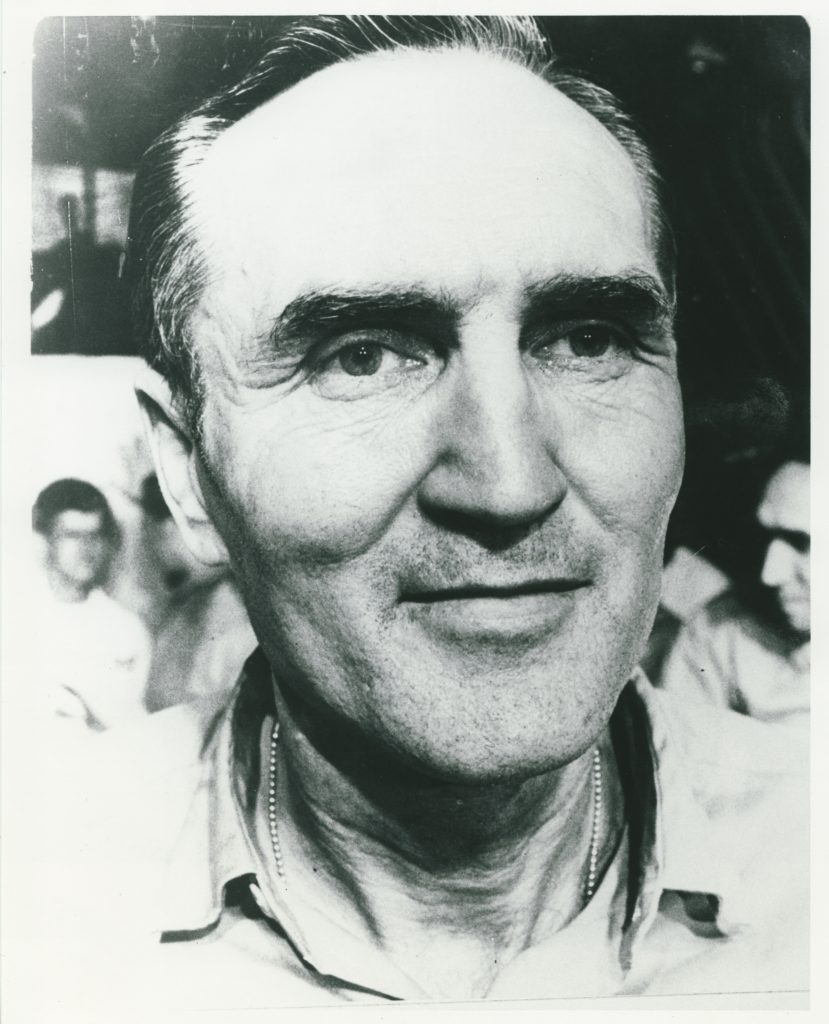
On March 4, 1976, Colonel Day was awarded the Medal of Honor by President Gerald R. Ford at a White House ceremony, one of four service members presented with the Medal of Honor at the ceremony. The others were Lieutenant Thomas R. Norris, Captain Lance P. Sijan, who received the Medal posthumously, and Rear Admiral James B. Stockdale. Like Day, Stockdale and Sijan were former prisoners of war. Sijan died while a prisoner in Hanoi in 1968. During the ceremony, President Ford spoke about service members whose fate still remained uncertain, telling those assembled, “These four men served in Vietnam. The war in Vietnam is now over. But as we today confer the Medal of Honor on heroes who distinguished themselves in Vietnam, we have not forgotten others whose fate still remains unknown. We will continue on humanitarian grounds to press for a full accounting for those men, to resolve questions that keep many American families living in endless anxiety and agony.”
After completing physical therapy, Day returned to active flying status and served as vice commander of the 33rd Tactical Fighter Wing. After his retirement in 1977, he wrote two autobiographical books, Return with Honor, and Duty, Honor, Country, and worked to secure better medical benefits for veterans. His advocacy helped establish TRICARE for Life for retired service members.
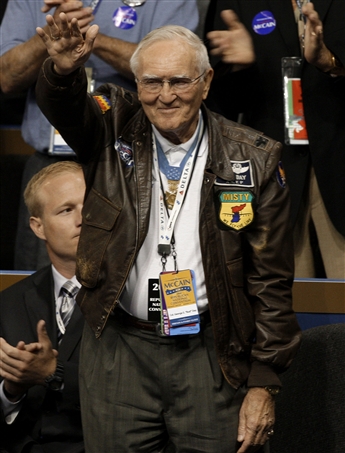
Bud Day passed away surrounded by his family at his Shalimar, Florida home on July 27, 2013 and is buried at Naval Air Station Pensacola’s Barrancas National Cemetery. In 2018, Day was posthumously advanced to the rank of brigadier general. During his imprisonment, one of his cellmates was Lieutenant Commander John McCain. Years later, McCain, by then a national political figure, recalled, “I owe my life to Bud, and much of what I know about character and patriotism. . . He was the bravest man I ever knew, and his fierce resistance and resolute leadership set the example for us in prison of how to return with honor.”
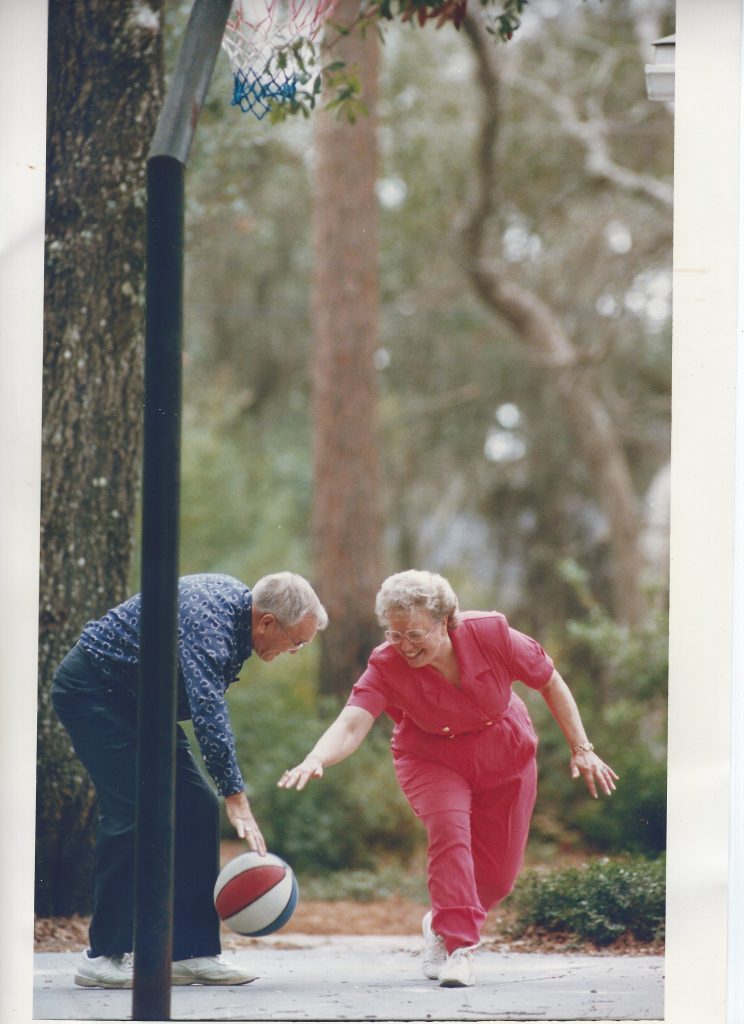
One of the Air Force’s most decorated service members, having received both the Medal of Honor and the Air Force Cross, General Day’s bravery and devotion to duty in the face of trying odds exemplifies the best of the United States Armed Forces and the symbolism and ideals reflected in the Medal of Honor.
